The Lost Innocence of 9/11
The renewed patriotism and commitment we felt 15 years ago has decayed, sullied by jingoism, xenophobia and paranoid fantasies about race and religion.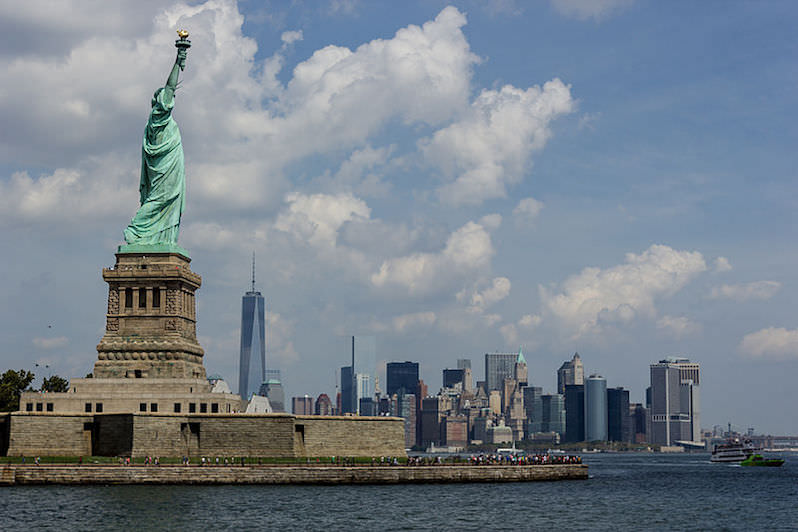 One World Trade Center, pictured to the right of the Statue of Liberty, in New York City. (Steve / Flickr / CC-BY-SA)
One World Trade Center, pictured to the right of the Statue of Liberty, in New York City. (Steve / Flickr / CC-BY-SA)
By Michael Winship / Moyers & CompanyAuthor’s note: I wrote the piece below for the tenth anniversary of 9/11 in 2011, not long before the Moyers & Company television series and the BillMoyers.com website began. It remains relevant on this 15th anniversary although a few things have changed. One World Trade Center has reached its full 1776 feet in height and office tenants have moved in. More than 25 million have visited the 9/11 memorial and its adjoining museum.
And the new Privacy and Civil Liberties Oversight Board, recommended by the 9/11 commission report, finally began holding meetings in October 2012. On January 23, 2014, in the wake of the Edwards Snowden revelations, a board report on mass surveillance was released calling for an end to bulk data collection by US intelligence.
According to their website, the most recent board meeting – closed to the public – was on November 9 of last year.
A long time ago, I helped produce for public television an annual year’s end interview with New York City Mayor Ed Koch. We always shot it in a private room at Windows on the World, the restaurant on top of the north tower of the World Trade Center, with a spectacular view toward the Empire State Building.
From that height, at the end of a sunny winter’s day you could see the lengthened shadows of the two towers stretch diagonally all the way across lower Manhattan, up and east to Stuyvesant Town.
One time, we were taken up to the roof, where the big transmitting antenna was. Around the perimeter was a gutter, some two to three feet wide and three feet deep or so — for the window cleaning apparatus that went up and down the sides of the building, I think.
Some of our production crew got into that well, knelt down, held onto the inner lip of the gutter and had their pictures taken. From a still camera’s perspective, you could make it appear as if you were hanging from the edge of the tower. It seemed funny at the time.
Two decades later, on that awful morning in 2001, I threw on a pair of shorts and a tee shirt and ran to the corner after my then-wife buzzed me from downstairs and shouted over the intercom that the World Trade Center was on fire. We stood on the corner looking down Greenwich Street at smoke and flames. She left for her newsroom, I watched for a few more minutes, and as I turned to return home, the second plane hit.
The gigantic blaze and collapse, the blizzard of paper, the sounds of sirens and church bells, the flyers taped to every wall looking for missing loved ones, and finally, of course, the overpowering smells that lingered in our air for weeks — I have so many memories and stories, many of which I’ve recounted before, all of them so puny in comparison to the accounts of heroism, bravery and tragedy that over the last week or two have once again filled the media.
But I also remember a week later, when television microwave trucks from around the world still stretched down the West Side Highway as far as you could see.
At one corner was a French anchorman, who I gathered was something of a superstar back home. Excited French tourists were bunched around, thrusting their cameras, waiting their turns for a Kodak moment with him.
Three and four at a time, he spread his arms around the visitors, grinning broadly and carefully posing everyone to make sure billows of smoke from the wreckage would be prominent in the background. With apologies to France, and thank you for the Statue of Liberty, but I really felt like giving him a punch.
For so long after 9/11, we gazed southward and the sky was empty where the original Trade Center once stood. I used to think there should be some vast chalk outline in the sky, showing where the twin towers had been, like the silhouette TV detectives draw of the spot where the murder victim fell.
These days, when I walk across my Manhattan intersection and look down Seventh Avenue, I can see One World Trade Center going up. As you’ve probably seen during the coverage of this week’s tenth anniversary, they’ve reached 80 plus stories; its glass sheathing rises part of the way to the top, construction lights twinkle at night on the unfinished floors above.
Eventually, the structure will be 108 stories with an illuminated mast that will lift it to a height of, yes, 1776 feet, but along the way they’ve abandoned the title Freedom Tower for fear of scaring away renters and provoking terrorists. I think of the 10 years that have passed, remember other 9/11 anniversaries and wonder what else has been abandoned as well.
On the first anniversary, I made the rounds: the tributes at Ground Zero, then a memorial service at the Episcopalian Church of St. Luke in the Fields on Hudson Street, where the weeping of victims’ families and friends pierced the heart. I attended a ceremony in Washington Square for the flight crews; doves were released for each of their lost lives.
The second year I was working and didn’t plan a visit, but as a friend from out of town and I sat on my roof that night, staring downtown at the twin shafts of light that shine each year in tribute, he asked if we could go.
We strolled around the banks of searchlights that created the two bright columns pointing into the sky and as we walked, a woman ran by, smudging the site with burning sage, trying to cleanse it of the evil that had happened there.
The next three years, I went to Ground Zero or attended other memorials, but on the fifth anniversary, when I arrived downtown the scene seemed, sadly, more circus-like.
The families of the victims were largely protected from it but those of us just outside were subjected to pitchmen and hangers-on, a man dressed in a bird suit urging passersby to “Have a Kind Day,” and everywhere, the “truthers” in their black tee-shirts, thrusting in your face brochures and DVDs pitching every sinister conspiracy they believe caused the towers to fall, except, of course, the one that actually brought them down.
Last year, on a train home from Boston, where the two flights that hit the towers originated, I watched the Tribute in Light from a distance, its shafts of illumination piercing the dark above the faraway Manhattan skyline. And this year I stayed at home and watched on television as the official memorial was opened with its waterfalls and engravings. Songs were sung and the 2,750 names were read aloud once again.
I did go down to Ground Zero on Wednesday, walking through the rain and mist to Church and Vesey Streets, the intersection at which One World Trade Center is rising. The majority of the sidewalk traffic seemed equally divided among groups of business people, construction workers and tourists. I stopped by St. Paul’s Chapel, where 10 years ago first responders and other emergency personnel slept, exhausted, in the church’s pews between hours of recovery work on the smoldering mountain of death and debris.
The wooden pews are gone now, stored — just temporarily, I hope — and replaced with folding chairs where visitors come to view mementos of 9/11 and listen to choirs and chamber music.
Instead of the tributes of flowers and stuffed animals that once crowded St. Paul’s iron fence, now white ribbons were tied, each marked “Remember to Love.” Anyone could add a message to them — in black ink, slightly running from the damp, people had written “RIP to All,” “Peace,” “Keep on rocking in the free world,” or just their names.
I had come downtown for a discussion at the New York County Lawyer’s Association, sponsored with the New York Neighbors for American Values. Its subject was “9/11: Refuting Stereotypes and Challenging the Common Wisdom.”
Eight panelists and moderator Tom Robbins discussed whether the public had been sufficiently involved in the plans for rebuilding lower Manhattan post-9/11 (no), if officials had recklessly downplayed the health hazards around the site (yes), if the mainstream media adequately reported those dangers (no) and whether post-attack security concerns had escalated intolerance and violated civil liberties (oh yes, indeed).
In fact, a new Privacy and Civil Liberties Oversight Board originally called for by the 9/11 commission report in 2004, its powers even strengthened by Congress in 2007, has yet to meet.We seem to have squandered the solidarity and goodwill amongst ourselves that briefly blossomed after the tragic events of 9/11 — not to mention global support — just as unthinkingly as we’ve spent $1.2 trillion dollars, according to the National Priorities Project (a nonpartisan, progressive think tank), on the wars in Afghanistan and Iraq — money that could have generated thousands of college scholarships; hired firefighters, police officers and teachers; provided low-cost health care for millions.
The renewed patriotism and commitment we felt a decade ago has decayed, sullied by jingoism, xenophobia and paranoid fantasies about race and religion. At the panel, Linda Sarsour of the Arab American Association of New York observed, “What stops another 9/11 is not profiling, but all New Yorkers becoming partners and friends.”
We actually had that for a while in those first days and weeks of smoke and ash, those days when the smell of vaporized metal and electrical cable and God knows what else filled our air; so pungent you could taste it.
We lived through those days, and in a decade of memorials we still see flashes of the unity, strength and dedication so necessary for democracy to survive.
But how horrible if the ultimate memorial to 9/11 is not waterfalls and names engraved on bronze or marble but the financial, moral and societal bankruptcy that Osama bin Laden and 19 followers armed with box cutters hoped would be our fate.
Your support is crucial…With an uncertain future and a new administration casting doubt on press freedoms, the danger is clear: The truth is at risk.
Now is the time to give. Your tax-deductible support allows us to dig deeper, delivering fearless investigative reporting and analysis that exposes what’s really happening — without compromise.
Stand with our courageous journalists. Donate today to protect a free press, uphold democracy and unearth untold stories.
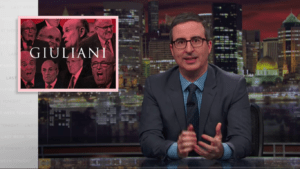
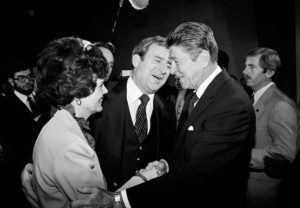
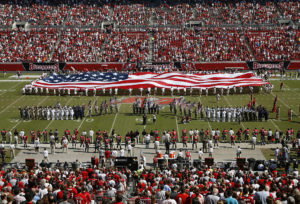
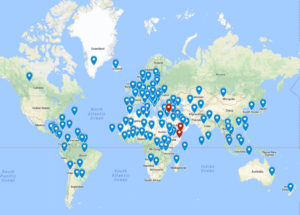
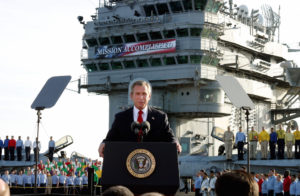
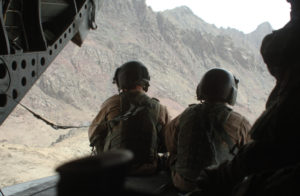
You need to be a supporter to comment.
There are currently no responses to this article.
Be the first to respond.